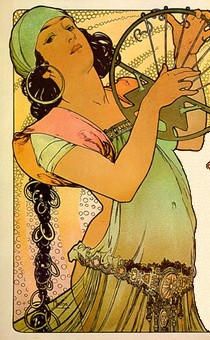
|
|
|
|
|
|
|
|
|
|
| Contact us |

Shakti's Sacred Dance WorkshopsShakti is ecstatic to be back on Kaua'i and is offering 2 classes on ancient sacred dance in celebration of her return:
|
 |
Basic Posture, Class Goals, & Respecting Your LimitsProper dance posture is crucial: with good posture, your moves will be easier & look cleaner. Proper Mideastern dance posture is as follows:
The pelvis supports most of the internal organs as well as the spine; the spine supports everything else above your pelvis. Thus good posture begins at the pelvis. The spine can be brought into proper alignment by standing up & then gently relaxing from the waist to touch your toes, keeping your knees slightly flexed. Completely relax the lower back, the shoulders, the neck, and everything else in your back in this position. After a minute or so, roll up one vertebra at a time, beginning with the bottom ones through the top ones and finally the head, making sure that each vertebrae lies comfortably above the one beneath it. Generally, if your back is uninjured this will not be difficult. Otherwise, respect your limits. Never try to force anything in a way that it does not want to move. Pain is nature's way of telling you to pay attention to what you are doing - respect it! In many sports we have been trained to work through our pain, to "feel the burn". We do not do this in Mideastern Dance. The isolations that we practice are intended to gently increase our flexibility, physical self-control, awareness, energy, and strength gently and gradually over time. If you ever feel any pain while practicing a dance move beyond the gentle ache of a normal stretch in the warm-ups, either draw back the move until the pain abates (stretch the affected muscle less) or stop and tell your teacher so that she can focus her attention on you. If you have any physical challenges please let her know so she can better assess how moves may affect you. Conscious control over core energetics and the resultant capability that allows your energy to move your body freely in accordance with your inspiration and visualizations is acquired slowly. In this class we will focus on gaining flexibility & physical self-control/self-awareness at specific isolation points (the chakras). We will learn to move these points in different directions and patterns. Your personal dance style will be respected as your dance vocabulary and skills are slowly increased. The goal is to expand your capabilities and teach you skills that will allow you to express your unique and beautiful energetic essence in any manner that you choose. Remember that the skills may require learning an entirely new degree of physical self-awareness and locations and ranges of motion that may also be quite new to you. Therefore, expect it to take several weeks or more to learn each move. Typically we will work on several moves during each class. Note that it is more important to do each move correctly than to
make it big. Bigness comes only with the increased flexibility of
long-time practice. We will often practice spirals to emphasize that
the same move can be done in many different sizes. The smaller sizes
require a finer degree of self-control. The larger sizes require
greater flexibility. Therefore, when learning a new move you will
achieve greatest effect starting at the size that is most naturally
comfortable for you - this is your balance point. Once you've
become comfortable at the movement you can improve your degree of
self-control by attempting to make it smaller. Your flexibility will
naturally increase from practice. |
||
Other Mideastern & Sacred Dance Class Topics
|
||
Cinnamon Phoenix offers Mideastern and Sacred Dance classes in Kaua'i, Hawai'i
For more information, please contact us at: shakti.dance@gmail.com
(808) 635-0688